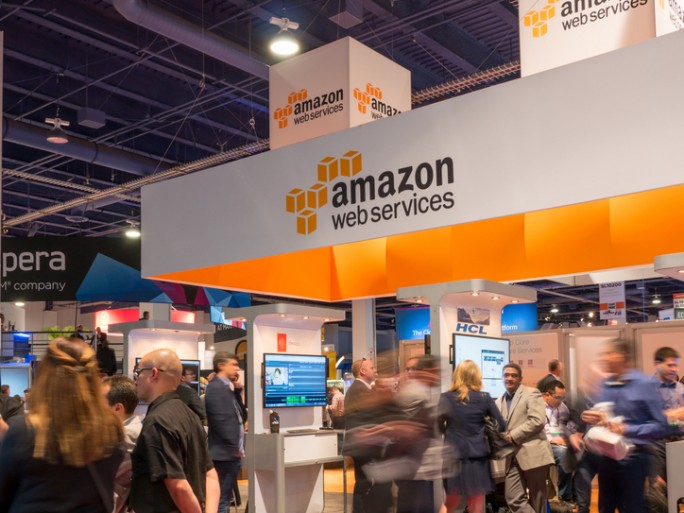AWS Diary: Amazon To Open Middle Eastern Region In Bahrain

AWS NEWS: Amazon adds per-second billing and will open new data centres in Bahrain to serve Middle East
August 2016: AWS Pushes ‘Serverless’ App Development At Its New York Summit
Amazon Web Services is showing it has not run out of ways to improve or expand the AWS cloud, especially for application developers.
At the company’s New York City Summit here Aug. 11 at a packed Javits Center, AWS CTO Werner Vogels discussed several developer initiatives based on its contention that the cloud’s economic model makes more sense than ever for enterprises.
Vogels presented updates on micro services initiatives and the Lambda serverless computing architecture, both of which he sees as the future of application development on AWS, along with containers.
Micro services are big applications broken down into fundamental parts so they can run in containers on the Lambda architecture. They are serverless apps in the sense that they run in memory on the cloud platform.
He said AWS is adding a Usage Plan option to its API Gateway service that gives developers more control over their APIs, and helps them develop Lambda serverless apps. And developers need the help, company officials explained.
“Serverless apps could end up as complicated as the monolithic applications they are replacing,” said Dr. Tim Wagner, general manager for AWS’ serverless initiative. In a session, he discussed the developer preview of Project Chalice, a Python-based serverless “microframework,” and another initiative, Project Flourish, which provides application templates for serverless code.
July 2016: AWS Shines In Quarterly Results
Amazon proved yet again in July that AWS is the undeniable leader in public cloud. Amazon Web Services revenue grew 58 percent, compared to a 31 percent hike in Amazon overall.
AWS revenue for the quarter hit $2.89 billion (£2.2bn), up from $1.82 billion (£1.4bn) for the same quarter last year. This puts the division on track for the much-celebrated $10 billion annual run rate.
“It’s been a busy few months for Amazon around the world, and particularly in India — where we launched a new AWS Region,” said Amazon boss Jeff Bezos, who is now the third richest man in the world.
July 2016: AWS Buys Cloud9 To Boost Developer Services
Amazon Web Services (AWS) has acquired Cloud9, a San Francisco-based startup that focuses on building cloud development environments for developers on both the web and mobile.
“We will be joining the Amazon Web Services family, and we’re looking forward to working together on terrific customer offerings for the future,” said Ruben Daniels, Cloud9 CEO.
“It’s still business as usual—we’ll continue to work with our Ace Open Source community and to provide our innovative services to you and our hundreds of thousands of customers worldwide. Over time, we’ll work with AWS to do even more on your behalf.”
July 2016: Brexit Won’t Stop Amazon Building Its AWS UK Data Centres
Amazon Web Services (AWS) has said the Britain’s decision to leave the European Union (EU) will not impact its decision to open data centres in the UK.
But the public cloud provider, currently on $10bn annual run rate, couldn’t give an official date for the launch of the UK region, aside from a projected window of between late 2016 and early 2017.
However, TechWeekEurope has learned from one source close to the matter that the specific date should fall between November 2016 and February 2017.
June 2016: Amazon Web Services Expands With First India Data Centres
 Amazon Web Services (AWS) has expanded with a new region centred in Mumbai, India, building its first data centres in a country where it says it has about 75,000 customers.
Amazon Web Services (AWS) has expanded with a new region centred in Mumbai, India, building its first data centres in a country where it says it has about 75,000 customers.
The move sees Amazon coming into more direct competition with the likes of Microsoft, IBM and NTT, all of which have local data centres supporting India’s rapidly growing cloud-services market.
Amazon already counted major Indian companies such as Tata Motors, taxi-hailing firm Ola and broadcaster NDTV amongst its customers, but until now India-based firms relied upon facilities in Singapore, Tokyo, Sydney or Seoul, all of which are located in AWS’ Asia-Pacific region. (Amazon also has a distinct region for China, using a data centre in Beijing.)
The new centres add an Asia-Pacific (Mumbai) region, meaning quicker response times for locally based customers, the company said. Amazon now operates a total of 35 data centres, each mapped to what it calls an Availability Zone, in 13 regions.